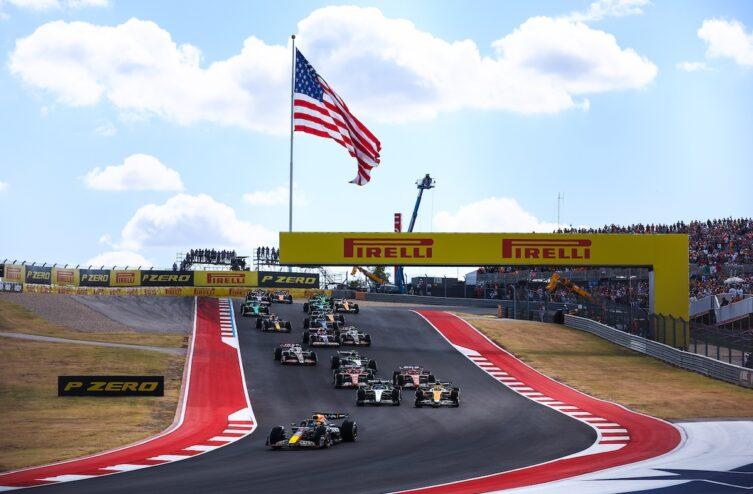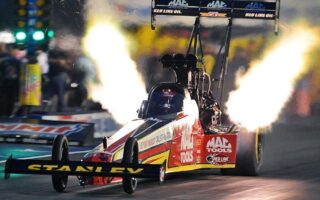In the annals of motorsport history, few seasons resonate as profoundly as the 1976 Formula One Grand Prix season. A year marked by fierce rivalries, technological strides, and a dramatic collision of human spirit against the backdrop of speed, 1976 captured the essence of racing like no other. At the heart of this tale lies the unforgettable battle between two titans of the track: James Hunt and Niki Lauda. Their contrasting personalities and philosophies on racing illuminated a season fraught with danger, determination, and astonishing triumphs. As we delve into the intricate tapestry of this iconic year, we will explore how a harrowing crash, a remarkable comeback, and the relentless pursuit of victory forever changed the landscape of Formula One and captivated the hearts of fans around the world. Step into the driver’s seat as we journey back to a pivotal moment in racing history, where the relentless roar of engines and the thrill of competition defined a generation.
Table of Contents
- The Rivalry that Defined a Season
- Moments of Triumph and Tragedy on the Track
- Technological Innovations Revolutionizing Racing
- Lessons Learned for Future Generations of Drivers
- Q&A
- Key Takeaways
The Rivalry that Defined a Season
The 1976 Formula One season was not just a series of races; it became a legendary saga of rivalry, courage, and tragedy, primarily encapsulated in the fierce competition between James Hunt and Niki Lauda. Hunt, the flamboyant British racer, was known for his daring overtakes and audacious persona, while Lauda, the stoic Austrian, epitomized precision and tactical brilliance on the track. The tensions between their vastly different styles not only fueled their personal rivalry but also captivated fans around the world. Each race was a spectacle, filled with drama that kept spectators on the edge of their seats.
Key moments of their rivalry that defined the season include:
- Hunt’s victory at the British Grand Prix, where he overcame Lauda’s early lead to take the win amidst an electrifying atmosphere.
- Lauda’s terrifying crash at the Nürburgring, which left him fighting for his life but showcased his incredible determination to return to racing.
- Hunt’s relentless pursuit of the championship, leading to a nail-biting finale at the Japanese Grand Prix, where dramatic weather conditions made the outcome uncertain.
This season culminated in a conflict of wills, with Hunt ultimately clinching the championship by a razor-thin margin. An unforgettable blend of personal struggles, triumphs, and the unbreakable bond of competition, this rivalry carved the 1976 season into the annals of motorsport history.
Moments of Triumph and Tragedy on the Track
The tumultuous year of 1976 on the Formula 1 circuit encapsulated a striking blend of triumph and tragedy, capturing the hearts of fans and the imagination of a generation. Among the most notable moments was James Hunt’s unforgettable victory at the Japanese Grand Prix, where he clinched the World Championship on the final lap, amid unrelenting rain and tension. The atmosphere was electric as he battled against his fierce rival, Niki Lauda, who, having suffered a near-fatal crash at the Nürburgring, made an awe-inspiring comeback. Hunt’s charisma and Lauda’s indomitable spirit turned the season into a gripping narrative of resilience and rivalry.
| Key Events of 1976 | Date | Location |
|---|---|---|
| Niki Lauda’s Crash | August 1, 1976 | Nürburgring, Germany |
| James Hunt’s Victory | October 24, 1976 | Fuji Speedway, Japan |
| Lauda’s Comeback | September 5, 1976 | Italian Grand Prix |
As the dust settled on the season, the contrasting stories of Lauda’s struggle for survival and Hunt’s relentless pursuit of glory became emblematic of the fragility and fervor inherent in motorsport. Each race was a poignant reminder of the highs and lows experienced on the track. Media narratives flourished around these two icons, highlighting their differences while also showcasing their shared love for racing. A legacy of determination, driven by the passion for speed, echoed throughout 1976, leaving an indelible mark on the sport and its fans.
Technological Innovations Revolutionizing Racing
In 1976, the world of racing was on the brink of technological transformation. Groundbreaking innovations began to emerge, altering the dynamics of speed, safety, and strategy. One prominent advancement was the introduction of aerodynamics, reshaping the design of racing cars. Engineers explored new materials that reduced weight while maintaining structural integrity, leading to more powerful yet lightweight vehicles that could achieve unprecedented speeds on the track. Additionally, the integration of data telemetry systems allowed teams to collect real-time information on car performance, providing invaluable insights into tire wear, fuel consumption, and engine efficiency. This level of analysis profoundly impacted race strategy, enabling teams to make informed decisions at critical moments.
The pivotal Grand Prix races of the season showcased an exciting interplay between driver skill and technological prowess. As teams began to experiment with active suspension systems and electronic fuel injection, the competition became fiercer, drawing in fans new and old. Furthermore, advancements in safety technology emerged in response to high-profile accidents. The introduction of crumple zones and enhanced cockpit designs prioritized driver safety, which was especially crucial given the high-speed nature of racing. The innovations of 1976 laid the foundation for the future of motorsports, ensuring that the thrill of racing continued to captivate audiences worldwide.
Lessons Learned for Future Generations of Drivers
The Grand Prix of 1976 was a pivotal moment in the history of motorsport, offering invaluable insights that remain relevant for today’s and tomorrow’s drivers. The extraordinary circumstances that surrounded the championship, particularly the intense rivalry between James Hunt and Niki Lauda, emphasized the importance of resilience, adaptability, and the value of calculated risk. Drivers can learn from Lauda’s comeback after his near-fatal crash—his determination to return to racing highlights the significance of mental toughness, as well as the need to assess personal limits when faced with adversity. Ultimately, it’s essential for drivers to balance ambition with safety consciousness, ensuring they remain grounded even in the face of high-stakes competition.
Moreover, the events of 1976 illustrate the necessity for clear communication and collaboration within teams. As technical advancements have accelerated, understanding vehicle dynamics and sharing insights with engineers has become crucial. Future drivers should prioritize fostering strong relationships with their teams to enhance performance on the track. Learning from past mistakes, such as those made by Hunt and Lauda during the season, becomes vital; embracing feedback and learning from experiences ultimately leads to better strategies and outcomes. In engaging with these lessons, upcoming generations can carry forward a legacy of not just skill, but ethics, safety, and camaraderie within the exhilarating world of motorsport.
Q&A
Q&A: Grand Prix 1976 - A Year of Triumph and Tragedy
Q: What was the significance of the 1976 Formula One season?
A: The 1976 season is often hailed as one of the most dramatic and intense years in Formula One history. It was marked by fierce rivalries, iconic races, and significant events, notably the rivalry between James Hunt and Niki Lauda. The season encapsulated the spirit of both human endurance and the perilous nature of motorsport.
Q: Who were the key figures in the 1976 season?
A: The standout figures were James Hunt, the charismatic British driver with a penchant for flamboyance, and Niki Lauda, the disciplined and meticulous Austrian driver. Their contrasting personas and racing styles created a compelling narrative throughout the season, drawing in fans around the world.
Q: What was the defining moment of the 1976 season?
A: The defining moment came during the German Grand Prix at the Nürburgring, where Lauda suffered a horrific crash that left him severely injured. His remarkable comeback just weeks later at the Italian Grand Prix became a symbol of courage and determination, ultimately highlighting the risks inherent in the sport.
Q: How did the rivalry between Hunt and Lauda unfold?
A: The rivalry began with Hunt’s triumphs in early races, followed by Lauda’s dominant streak until his crash. Their competition was not only about speed on the track but also highlighted their differing approaches to racing; Hunt’s reckless abandon contrasted with Lauda’s calculated precision. The year culminated in a dramatic battle for the World Championship, which Hunt ultimately won by just one point.
Q: What impact did Lauda’s crash have on the sport?
A: Lauda’s crash raised significant concerns about safety in Formula One, leading to heightened awareness and changes in regulations regarding driver protection and circuit safety. His return to racing not only inspired a generation but also underscored the need for improvements in the sport’s safety protocols.
Q: Can you summarize the overall outcome of the 1976 season?
A: The 1976 season concluded with James Hunt winning the World Championship, becoming the first British driver to earn the title since Jackie Stewart. The season’s competitive spirit, tragic events, and Lauda’s inspiring recovery left an indelible mark on the history of Formula One, making it a pivotal year that transformed the sport’s narrative.
Q: What legacy did the 1976 season leave behind?
A: The legacy of 1976 lies in its embodiment of the highs and lows of racing. It set a benchmark for drama in motorsport and established the notion of the ‘underdog’ hero – a narrative that resonates deeply in sports culture. Moreover, the year pushed the boundaries of engineering, sportsmanship, and safety in Formula One, influencing how races are conducted to this day.
Key Takeaways
As we close the chapter on the Grand Prix of 1976, we reflect on a defining moment in the history of motorsport—a year marked by unprecedented drama, unyielding rivalries, and the indomitable spirit of competition. From the fiery clash on the track to the poignant moments that shaped the lives of its stars, the narrative of 1976 transcends mere racing; it becomes a testament to human resilience and the relentless pursuit of excellence.
This extraordinary season not only captivated fans but also left an indelible mark on the world of Formula 1, influencing generations of drivers and igniting passions that continue to burn brightly today. As we look back, we are reminded that in the heat of rivalry, there lies an unshakeable bond among competitors, a shared quest for glory that transcends victory and defeat.
the Grand Prix of 1976 is not just about the cars, the circuits, or the championships; it’s a stunning reminder that within every turn, every lap, and every heartbeat of the race lies the essence of what it means to truly push the limits. As we gear up for future seasons, may we carry forward the lessons learned from this remarkable year—celebrating both the triumphs and the tragedies that make motorsport a thrilling saga, forever etched in time.



